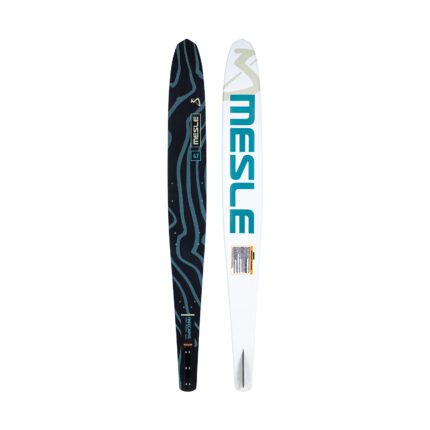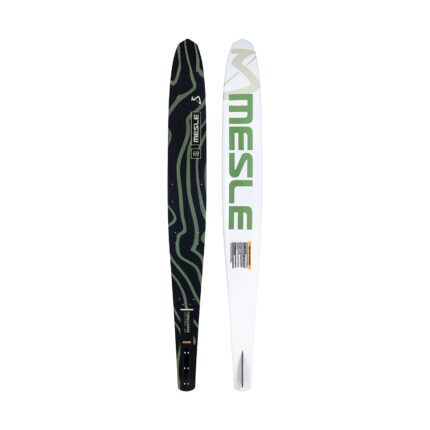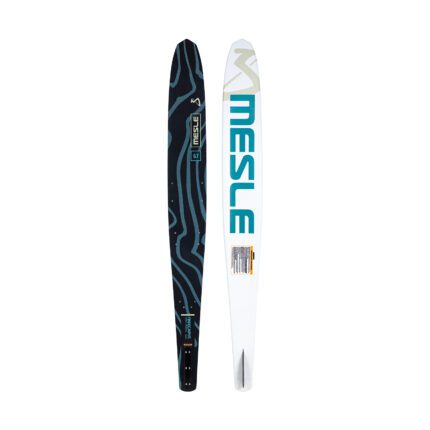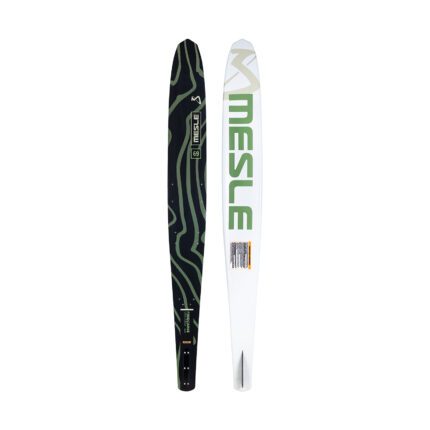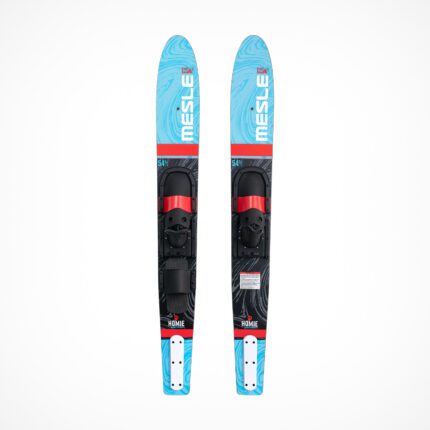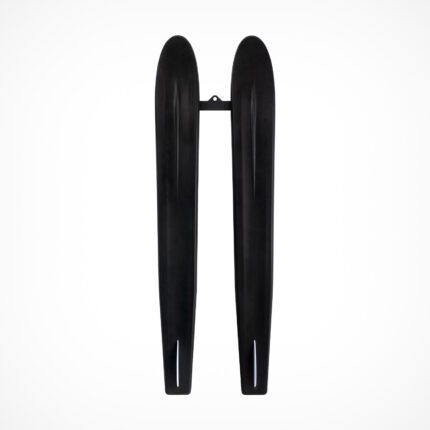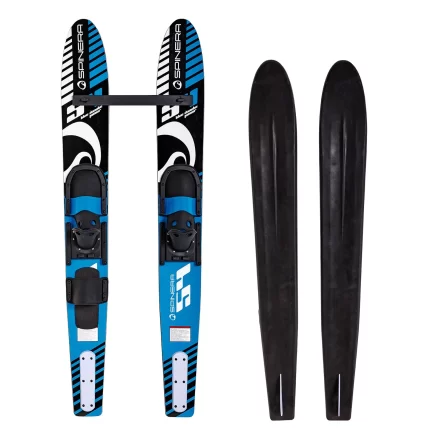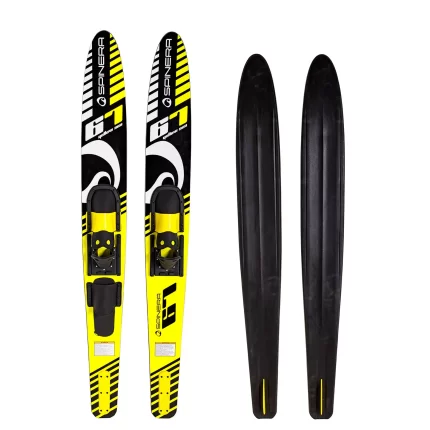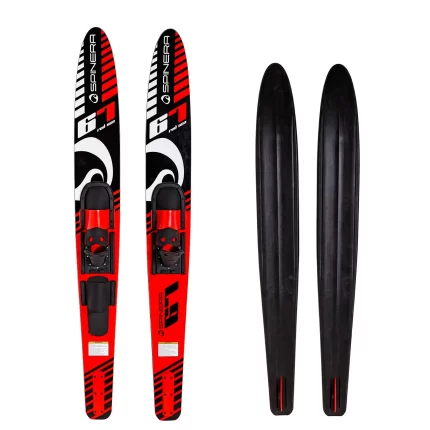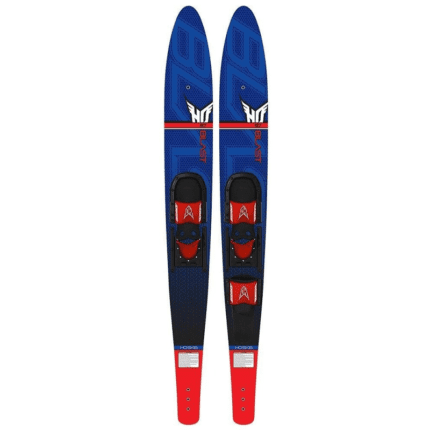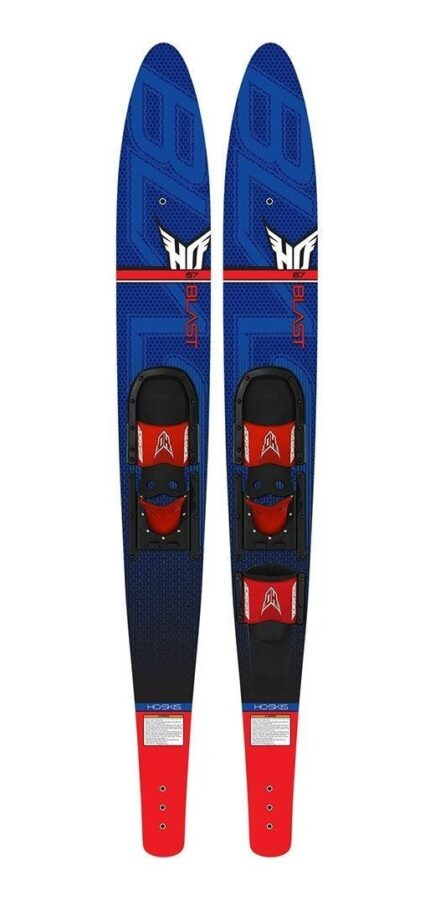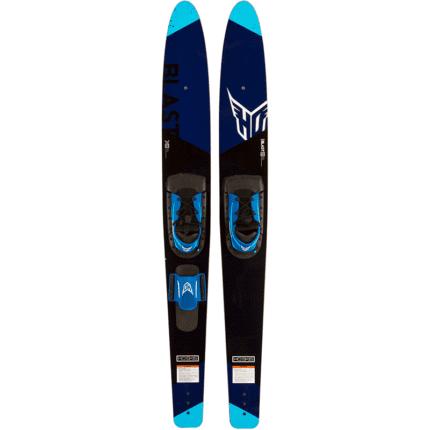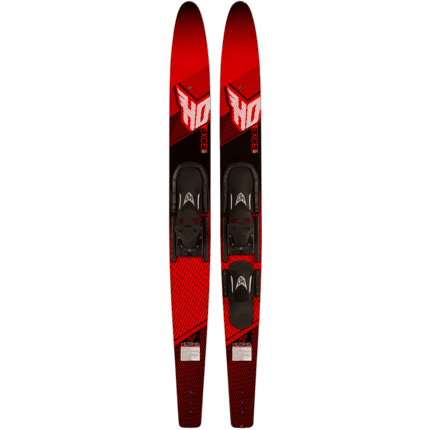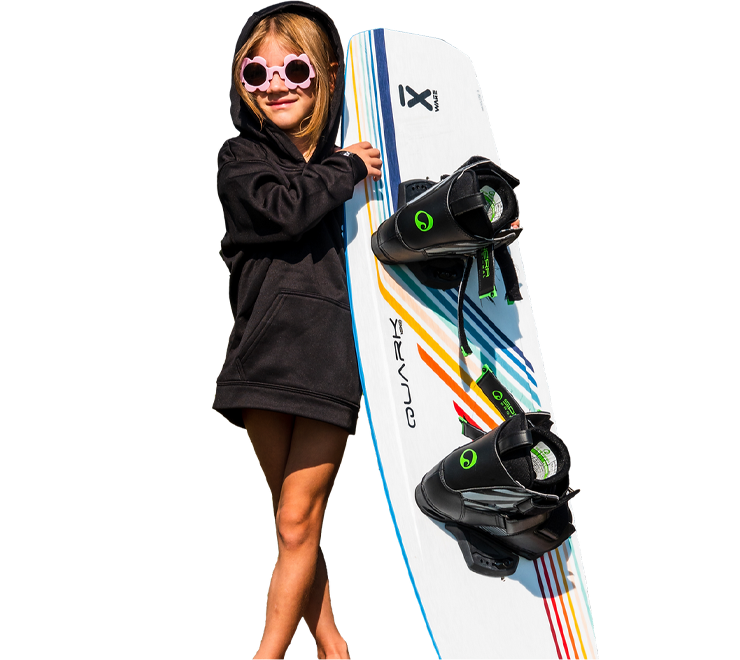Waterskis
Showing all 10 results
Waterskis are specialized water sports equipment designed for gliding on the surface of the water while being towed behind a boat. They are a popular choice for recreational water skiing, a thrilling activity that involves standing on the skis while holding onto a towline attached to a boat. Here are some key features and considerations regarding waterskis:
Features:
Construction: Waterskis are typically made of lightweight materials such as wood, fiberglass, or a combination of both. Modern waterskis may also incorporate advanced materials for enhanced performance.
Bindings: The bindings on waterskis secure the skier’s feet to the skis. They are adjustable to accommodate different foot sizes and can be tightened to ensure a secure fit.
Design: Waterskis come in various designs to suit different skiing styles and skill levels:
Combo Skis: These are beginner-friendly skis with wider tips for stability and a single front binding. They are ideal for those new to water skiing.
Slalom Skis: Slalom skis are designed for more experienced skiers. They have a single front binding and a narrower, contoured shape for better performance and maneuverability.
Trick Skis: Trick skis are shorter and wider, designed for performing tricks and stunts on the water.
Jump Skis: Jump skis are specialized skis used for water ski jumping events. They have a wide, flat design to provide lift during jumps.
Fins: Most waterskis have fins on the underside to provide stability and control while skiing. The size and shape of the fins can vary and affect the ski’s performance.
Bindings: Waterski bindings are designed to securely hold the skier’s feet in place while allowing for easy entry and exit. They are adjustable to accommodate different foot sizes.
Considerations:
Ski Length: The length of the skis can affect stability and performance. Longer skis are generally more stable but may be less maneuverable, while shorter skis are more agile but may require more skill to control.
Skill Level: Consider your skill level when choosing waterskis. Beginners often start with combo skis, while more experienced skiers may prefer slalom skis for advanced maneuvers.
Type of Skiing: Determine the type of skiing you plan to do. Recreational skiing, slalom skiing, trick skiing, and jumping skiing all require different types of skis.
Bindings Comfort: Ensure that the bindings are comfortable and provide a secure fit to prevent foot slippage during skiing.
Safety: Safety is paramount when water skiing. Always wear a properly fitted life jacket, and be aware of safety guidelines and rules for water skiing in your area.
Maintenance: Rinse your waterskis with fresh water after each use to remove salt and debris. Store them in a cool, dry place to prevent damage.
Waterskiing is an exciting water sport that offers thrills and enjoyment for participants of various skill levels. Choosing the right waterskis that suit your skill level, skiing style, and preferences is essential for a safe and enjoyable experience on the water.
 Boards
Boards Packages
Packages Boots & Bindings
Boots & Bindings Essentials
Essentials Waterwear
Waterwear Apparel
Apparel Wakesurfers
Wakesurfers
 Towers & More
Towers & More Boat Accesories
Boat Accesories Ballast Systems
Ballast Systems